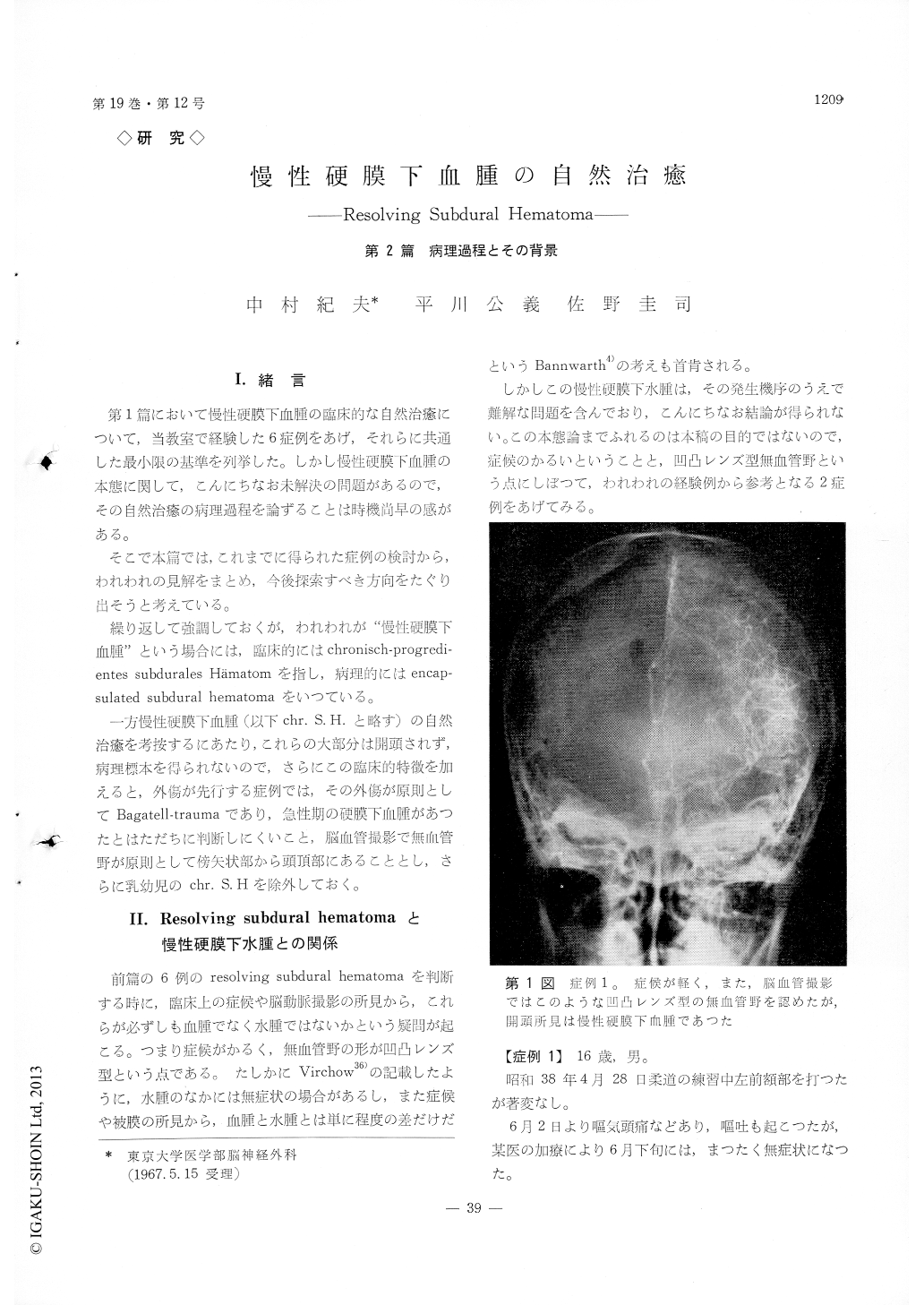Japanese
English
- 有料閲覧
- Abstract 文献概要
- 1ページ目 Look Inside
I.緒言
第1篇において慢性硬膜下血腫の臨床的な自然治癒について,当教室で経験した6症例をあげ,それらに共通した最小限の基準を列挙した。しかし慢性硬膜下血腫の本態に関して,こんにちなお未解決の問題があるので,その自然治癒の病理過程を論ずることは時機尚早の感がある。
そこで本篇では,これまでに得られた症例の検討から,われわれの見解をまとめ,今後探索すべき方向をたぐり出そうと考えている。
(1) Five out of six cases of resolving subdural hematoma, formerly reported by t he authors, were not operated on. However, from the clinical and roentogenological point of view and from the very small incidence of hygroma in the authors' clinic, the authors believe that all these five cases werechronic subdural hematoma.
(2) Generally speaking, clinical manifestations and courses, pathological findings of the capsule, and the nature of the bloody fluid of the chronic subdural hematoma strongly suggest a possibility of natural recovery of the disease itself.
(3) One case of resolving subdural hematoma formerly reported, was operated on. The operative and pathological findings of the hematoma were identical with common chronic subdural hematoma.
(4) It happened that autopsy was performed in one patient 6 months after the irrigation therapy of chronic subdural hematoma. The hematoma, which had occupied the subdural space at operation, disappeared already and the outer and inner mem-branes of the capsule adhered to each other uniformly inside the dura, and only a small amount of cal-cification took place in places within the membrane.
This may represent one of the spontaneous ter-mination of encapsulated subdural hematoma.
(5) Two cases of calcified subdural hematoma were reported. These are one of the terininal sta-tion of chronic subdural hematoma.
(6) Among autopsies of acute head injuries, done in the Tokyo Medical Examiner Office, a case of chronic subdural hematoma was discovered by chan-ce, the capsule of which was nearly completely or-ganized.
This autopsy suggests that the growth of chronic subdural hematoma and its spontaneous recovery may take place unnoticed sometimes and somewhere. (7) One supplementary case of resolving subdu-ral hematoma was reported. The patient complained of markedly decreased vision which continued still after the hematoma disappeared.
(8) From these experiences, above mentioned, the authors discussed the life cycle of chronic subdu-ral hematoma and classified it into 4 stages as shown in Fig. 10: namely, the stages of encapsulation, ex-pansion, diminution and termination.

Copyright © 1967, Igaku-Shoin Ltd. All rights reserved.


